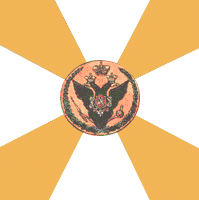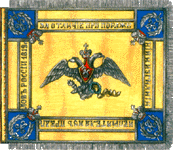Colin,
1. The morale is no longer so low. In H&R 1.03 at the beginning of scenario "average" regular units have effective morale C. Nominally it's B, but taking int account high fatigue it's reduced to C. Hence no rout fest and no specific tactics associated with making enemy rout at enormous pace.
2. The point was not to prohibit melee. The point was to give defending side a chance. In Bill's scenarios it's simply about bringing large masses into a single hex. Even though these masses highly exceed what usually could be stacked into such a small space.
We had several checkpoints, i.e. several situations that must happen with reasonable probability (frequency).
-single battalion attacking another single battalion defeats it;
-single battalion defending against two attacking battalions stands the ground;
-single charging squadron defeats single non squared battalion, etc.
The settings in 1.03 satisfy most of these requirements. With different notions of reasonability, of course

Although the setting does not outright prohibit melee it makes a fail [very] probable. And next we have all the evolution of Napoleonic time warfare in a hex. You can simply attack and drive away over extended enemy. But if his density is normal you need to soften him up at first with arty. But then he may have arty of his own, then you are to deploy a grand battery that will destroy everything in front of it, but your enemy can deploy it two. Finally you have Borodino or Liberwoltkowitz with several hundreds tubes on a narrow front on each side and "no living creature" zone in between them.
Does that mean that all of the battles are dull battles of attrition? I think not. Yes, you both deploy grand batteries, but you do it a few turns earlier and can launch a devastating assault while enemy still deploys. Or you found a key spot that allows you to roll up enemy line. Or managed to turn the flank. Or... Well, it's you who should teach me tactical lessons, not vice versa. The point is all this is still possible. All this tactical brilliance became even more important. But one must have in mind that now the defending side can try to bring it to a dull dumb battle of attrition. And its opportunities of doing so increased dramatically.
3. Stacking limit is set 900. What could prevent you from stacking two in-line halves of the battalion together literally reproducing the formation you wrote about? But in H&R 1.03 it would have firepower a bit higher that that of a single batallion. Or exactly equal if you prohibit going to the top of stack with a house rule. The formation you talk about in Bill's scenarios has tremendous effective firepower greatly increasing that of a 400 man strong unit.
David,
I must make two points.
First, please do read the document here
http://www.nwc.albom55.ru/hrp/pic/H&R%20Main.pdfPages 3-9 are devoted to in depth description of why and how we selected parameters and what we've achieved. I feel comments and questions should be posed to this extensive (6 pages long!) text, not my three rachitic lines.
Second, the picture you present is great. But what it depicts? A very good account of the battle of Eylau is given by Arnold in his Crisis in the Snows. If you follow the narrative you will notice that the cavalry did move into the attack in this column. It passed it's own line like that. but when it came to melees the regiments deployed into lines of squadrons 2 ranks deep and charged home. Sometimes followed by reserves at distances of more than 100 meters.
Sorry for the numerous typos. I'm on a busyness trip and is absolutely unused to the laptop keyboard.
_________________


Leib-Guard Cuirassiers Regiment's
General-Fieldmareshal Count Anton Kosyanenko
Commanding Astrakhan grenadiers regiment
2nd Grenadiers Division, Russian Contingent





